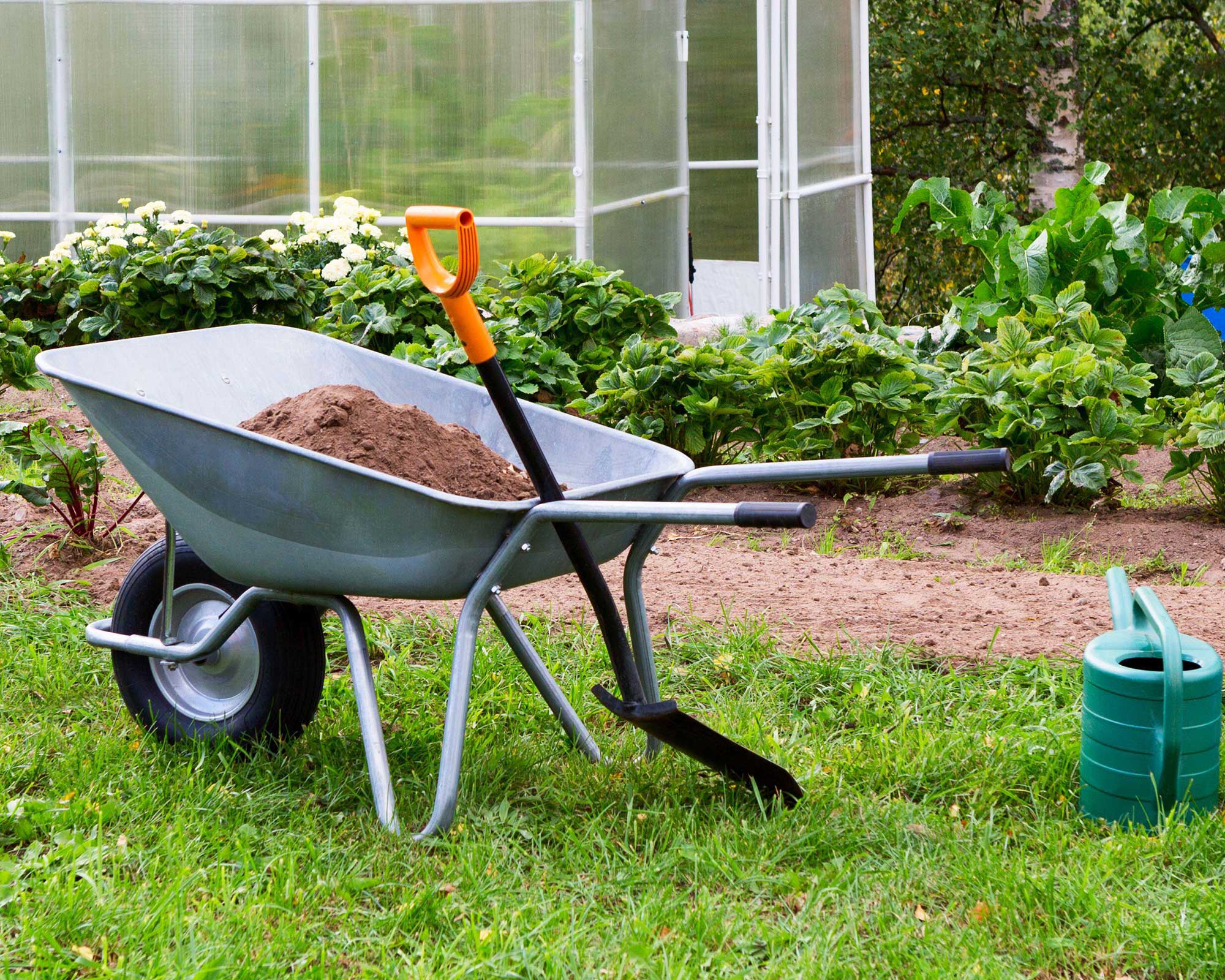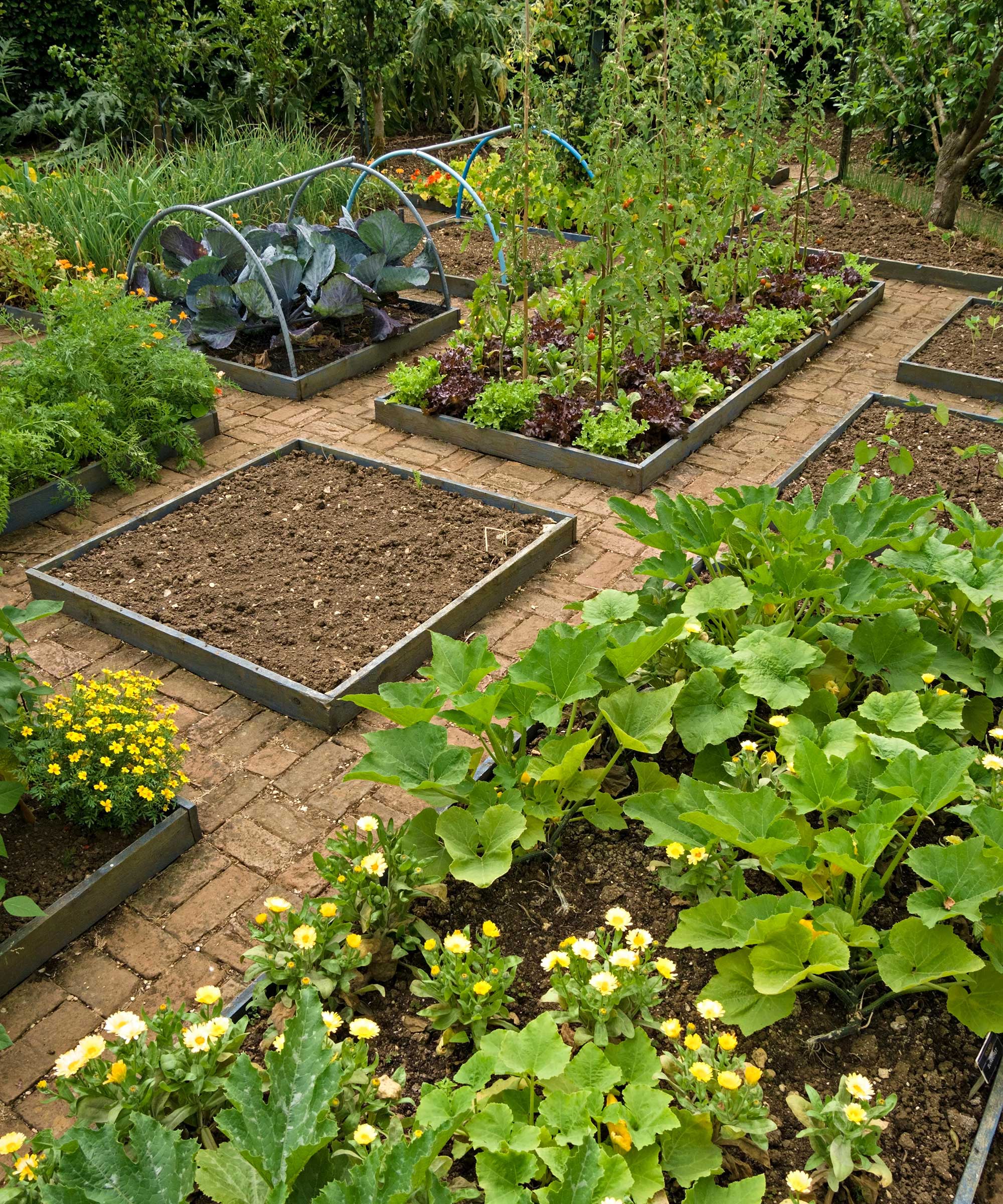Compost vs topsoil: a guide on what to use and when
Confused about the difference between compost vs topsoil? We're here to help you make the right choice for your yard


Compost vs topsoil – which is best and why? If you've been planning a new garden flowerbed, you may be after some simple clarification between the two. Well, you've come to the right place.
It's understandable why you might be scratching your head over the matter. They're both brown and earthy, can be bought from the garden centers in bags, and are used for growing plants. In fact, even if you dabble in your own DIY composting, you might be unsure of how exactly to use it and when to use topsoil instead.
Knowing the differences, and the best ways to use them, gives you a much better chance of successful gardening and might even cost you less. So, to clear up any confusion once and for all, we've brought together everything you need to know when it comes to compost vs topsoil. You'll soon see that it's really quite straightforward.
Compost vs topsoil explained
Whether you're gearing up for your next landscaping project or just fancy creating a colorful new container display, you'll want to know the differences between compost vs topsoil. Our advice explains all.

What is topsoil?
Topsoil, as its name suggests, is the very top layer of natural soil and the most nutrient-dense. It is readily available to buy in bags from DIY stores and garden centers.
As the RHS explains, shop-bought topsoil tends to be categorized into three different types: premium, general-purpose and economy. Premium is the priciest, but the extra cost should buy you a weed-free mix that's high in fertility and has a good, loamy structure. It's a great pick if you're planning on putting any new flowerbed ideas into action.
General-purpose topsoil can also be used when creating new borders, or when sowing fresh lawns. You can buy different screen-sized grades – this refers to the mesh screen the soil is sifted through – varying between coarser and finer textures. Coarser grades are good for laying turf (and are generally cheaper) whilst finer grades are better for top dressing lawns, explains the RHS.
Economy topsoil generally hasn't been sifted or 'screened' and is the least expensive. It tends to be used for more structural projects – if you want to build up a level in your garden, for instance. The uneven texture can make it more difficult for plants to grow, which is why it's better used for landscaping rather than gardening. If you want to use it as a filler for large raised garden beds however, a finer topsoil can always be added to the top.
Bear in mind that general-purpose, economy, and even some premium topsoils run the risk of having weeds, and sometimes rocks and glass. Carefully check the soil for this before you buy if possible, but still be prepared to do a bit of maintenance once you've got it in place. Our guide on how to get rid of weeds will come in handy.

What is compost?
Now, compost. This material is made from decomposed organic matter. If you've got one of the best compost bins in your backyard, then you may have already seen your old veg scraps transform into a rich, earthy substance over time. Hot composting or indeed worm composting will get you these results faster.
Of course, if you don't make your own, you can buy it (just remember to opt for peat-free compost – crucial for helping out our environment). Whether it's homemade or not, compost slowly releases nutrients when added to the soil – a lot more than topsoil – which are then absorbed by plants. It can also improve drainage, especially in compacted soils, so in general it's a great way to boost the quality of your containers, raised beds, and borders. Think of it as a soil amendment. However, it's more expensive than topsoil and tends to retain water less easily.

Can you mix topsoil and compost together?
When growing plants, you absolutely can – and ideally should – mix together topsoil and compost to get the best of both worlds. This is an ideal approach if you're creating new raised beds or borders.
The topsoil, being less expensive, will provide the quantity of material needed for the project. It will also help the area retain water better (compost tends to dry out much quicker). However, mixing in compost will give the soil an extra boost of valuable nutrients which will help your plants grow stronger and healthier.
You can also mix the two to create your own potting compost, or for your container gardening ideas. For these, as well as very hungry plants such as vegetables, it's often a good idea to add a fertilizer to the mix too.

Can you use fertilizer instead of compost?
Now you know more about compost vs topsoil, you might be wondering if you can switch in fertilizer instead of compost. After all, both composting and fertilizing plants provides them with nutrients, so aren't they pretty much the same thing?
Not quite. Although fertilizer is a great addition to soil mixes, it releases nutrients much quicker and is more expensive (especially if you make your own compost). It also does nothing for the structure of the ground – how well it breaks up the soil, for example.
For those reasons, it's best to use compost mixed with topsoil to create an optimal and sustainable environment for your plants, and then add in fertilizer should you need it. This could be to amend specific nutrient deficiencies or to give veggies a boost during their growing season, for instance.

The garden was always a big part of Holly's life growing up, as was the surrounding New Forest where she lived. Her appreciation for the great outdoors has only grown since then. She's been an allotment keeper, a professional gardener, and a botanical illustrator – plants are her passion.
